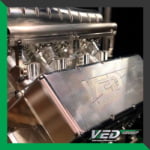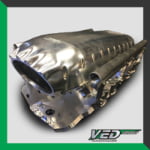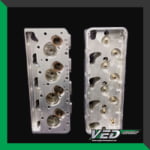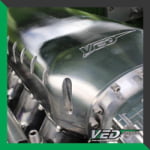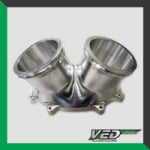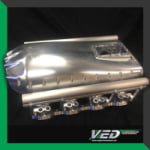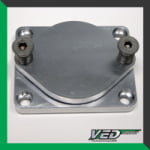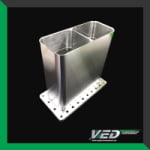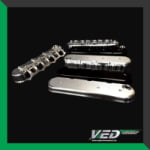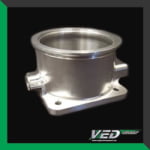Shop VED Store
- Billet Engine Blocks
- Billet Cylinder Heads
- Billet Intake Manifolds
- Billet Valve Covers
- Throttle Body & Carb Spacers
- Throttle Bodies
- Fuel Accessories
- Hat Washers
- Flame Hoops
- Apparel & Merch
VED Information
- Contact VED
- About VED
- Services
- Testimonials
- Get Featured by VED
- Privacy Policy
- Warranty, Shipping & Returns
Contact VED
Visner Engine Development, LLC
8603 Savannah Dr
Saranac, MI 48881
Phone: 616-726-6600
Fax: 616-726-6601
Contact Us
FOLLOW @VisnerEngine
for builds, info, and more



TAG US: #VisnerEngine
to get featured!
Technical Information
How Much Does it Flow?
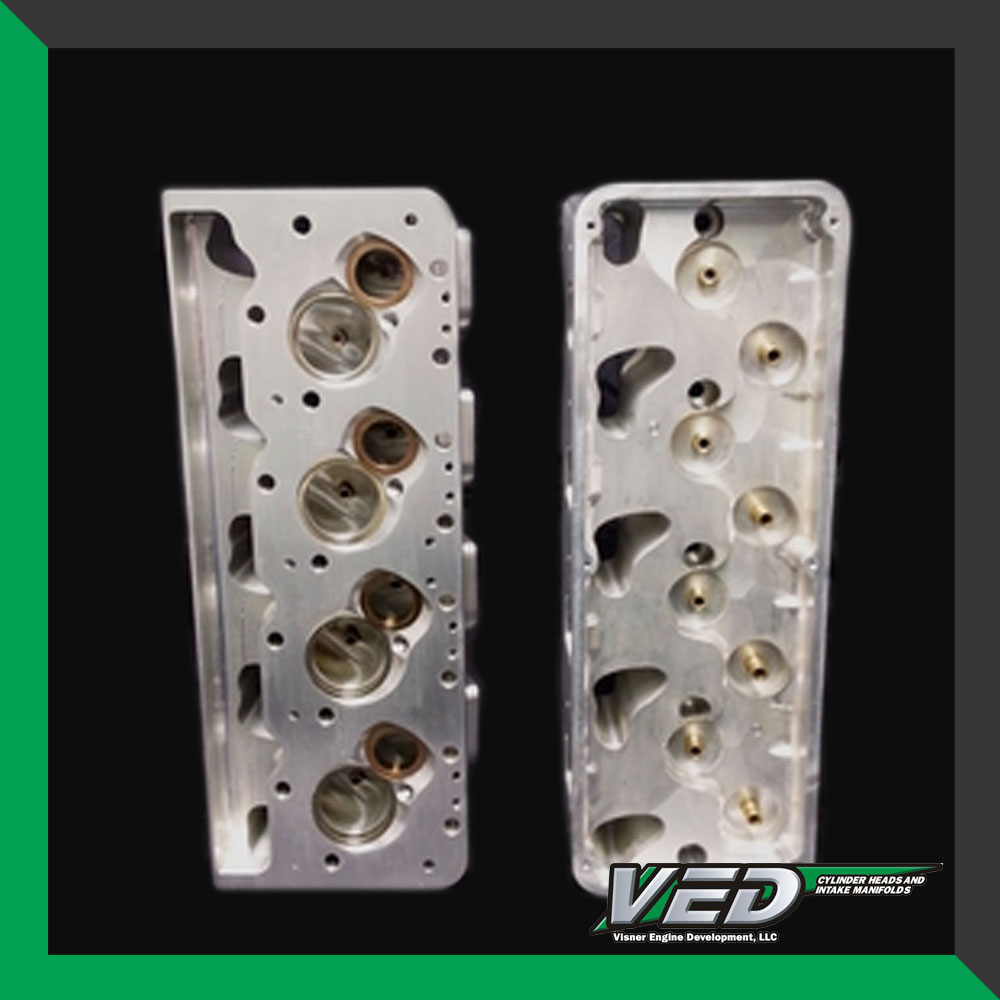 This has been the standard question for evaluating a cylinder head for years. Today, it is only one factor in the port design process. Big ports that flow a lot of air frequently do not run well. I often tell racers that all good running ports flow good, but not all good flowing ports run good.
This has been the standard question for evaluating a cylinder head for years. Today, it is only one factor in the port design process. Big ports that flow a lot of air frequently do not run well. I often tell racers that all good running ports flow good, but not all good flowing ports run good.
The flowbench has been a valuable tool. When we were working with poorly designed ports, we made airflow gains that made the port more efficient. These gains made more power and we all got flowbench crazy. Eventually, we started to realize that the flowbench does not accurately simulate a running engine and to make ports better, we had to look at other factors.
A flowbench has only one dynamic action, the steady state airflow at a specified depression (usually 28 inches H2O). A running engine has multiple dynamic actions occurring simultaneously like piston movement, valve movement, intake flow, exhaust flow and pulse waves from multiple cylinders. This complicates the port design which needs to be tuned to the engine size, rpm range, and intended use of the application.
When evaluating cylinder heads for modern racing engines, airflow should be low on the list of important factors because as a professionally prepared port, they should all flow well. I recommend working with a cylinder head designer that has knowledge with the head requirements for your engine design and racing application.

